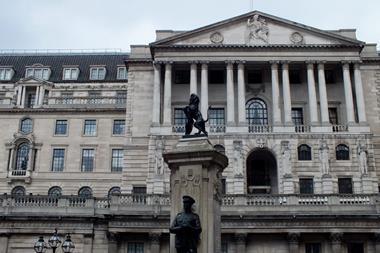But factoring claims inflation into premiums could impact insurers’ profitability in the short term, says head of market intelligence, as premiums will be forced to increase ‘for some time yet’
This week, the Office for National Statistics (ONS) once again confirmed that inflation’s upwards trajectory is fast continuing in the run up to Christmas.
Its Consumer price inflation, UK: October 2022 bulletin, published on 16 November 2022, revealed that the Consumer Prices Index (CPI) climbed 11.1% in the 12 months to October 2022 – an increase on the 10.1% uptick it recorded for the year to September 2022.

In terms of monthly changes to inflation, CPI – which measures the overall change in consumer prices based on a representative basket of goods and services over time – grew 2% last month, compared to a 1.1% increase in October 2021.
The ONS attributed October’s rise in inflation to gas and electricity prices, as well as rising food prices.
Tom Pugh, economist at RSM UK, noted that this 11.1% CPI marks a “40-year high”. However, he does not define this milestone as necessarily a bad thing for the UK economy.
He explained: “The good news is that inflation has probably peaked. The government’s energy price cap, in place for the next six months, will ensure there are no further rises in household utility bills over that period.
“Inflation is likely to steadily edge down over the winter, but larger than usual gains in food and services will mean annual CPI will still be around 9% in March [2023].
“After that, the outlook becomes much murkier.”
Rising rates
But what does this all-time inflation high mean for the insurance sector?
According to Paul De’Ath, head of market intelligence at business management consulting firm Oxbow Partners, “insurers are most impacted by inflation through increased claims costs”, with wage inflation coming a close second in terms of cranking up staff costs – an issue that will affect all UK businesses.
De’Ath told me: “Inflation is not uniform in nature. We note that the current spike in inflation has been driven by energy and food costs.
“While energy prices have a knock-on impact all industries, the large uplift in the cost of milk and cheese in the latest figures [is] unlikely to directly increase the cost of motor repairs.
“Motor claims inflation has been accelerated this year due to supply chain issues, alongside the general increased cost of parts and labour – [although] this is starting to level off as supply chains open up more.”
Read: Broker CEO Forum - ‘Difficult to manage’ economic turmoil will last until 2024 – RSM
Explore more news analysis here, or read up on financial articles here.
Despite this overall bleak lay of the land, De’Ath added that “inflation is not fundamentally bad for the industry”, however.
He explained: “If insurers can manage the impact of inflation through higher premiums, they can maintain profitability.
“The difficulty is that premiums written now need to consider the level of claims inflation over the coming 12 months or more, so sharp increases in inflation as we have seen this year are impossible to fully price in and will impact profitability in the short term.
“We would expect premium rates to continue to increase for some time yet as the market adjusts to higher expected claim levels.”
Balancing act
Although insurers may remain unfazed by turning the dial up on premium prices to mitigate claims inflation, “the question remains over the ability of customers to pay”, De’Ath warned.
“Within the personal lines space, motor insurance has relative protection due to its compulsory nature,” he continued.
“Though the need to increase prices is less marked than in motor, home, pet and travel insurance could see dips in demand as the cost of living increases and customers cut [their] spending on ‘non-essentials’.”
Rapidly rising inflation has undoubtedly been the hot topic throughout 2022 – and judging by Pugh’s comments, the complications arising from this will still need to be contended with in 2023 to some degree.
Read: General insurance firms’ creditworthiness will be hardest hit by inflation – Fitch
Explore more news content here, or read up on financial articles here.
The insurance industry is between a rock and a hard place – premiums for both commercial and personal customers have to increase to cover the escalating costs associated with inflation, however the cost of living crisis and recessionary environment is putting pressure on customers’ purse strings.
This landscape surely cements the importance of brokers within the sector – they must work with both insurers and end customers to find creative and innovative propositions that will fulfil clients’ needs without also emptying their bank accounts.
Amid hard times, opportunities still arise.
Hosted by comedian and actor Tom Allen, 34 Gold, 23 Silver and 22 Bronze awards were handed out across an amazing 34 categories recognising brilliance and innovation right across the breadth of UK general insurance.



















































No comments yet